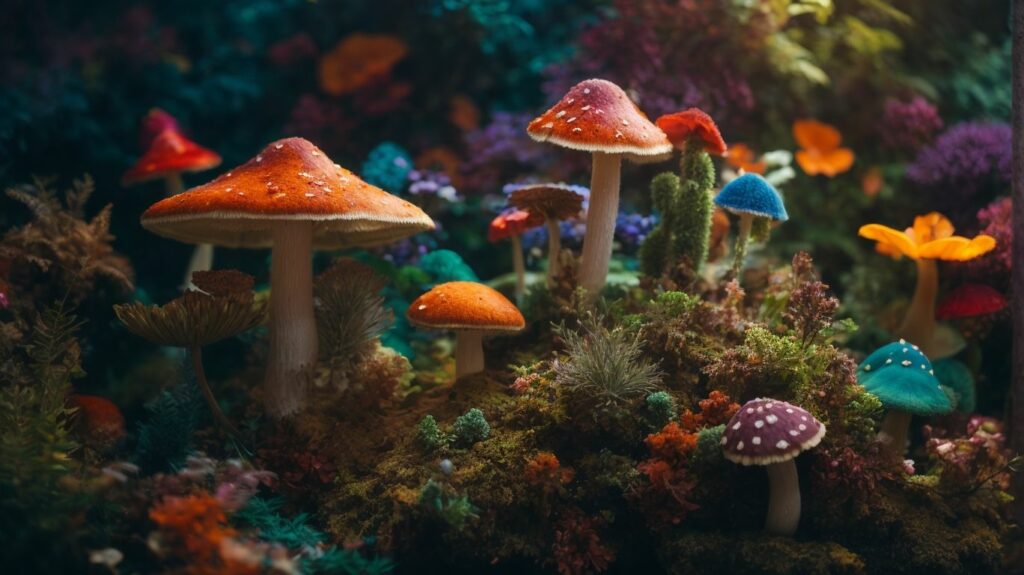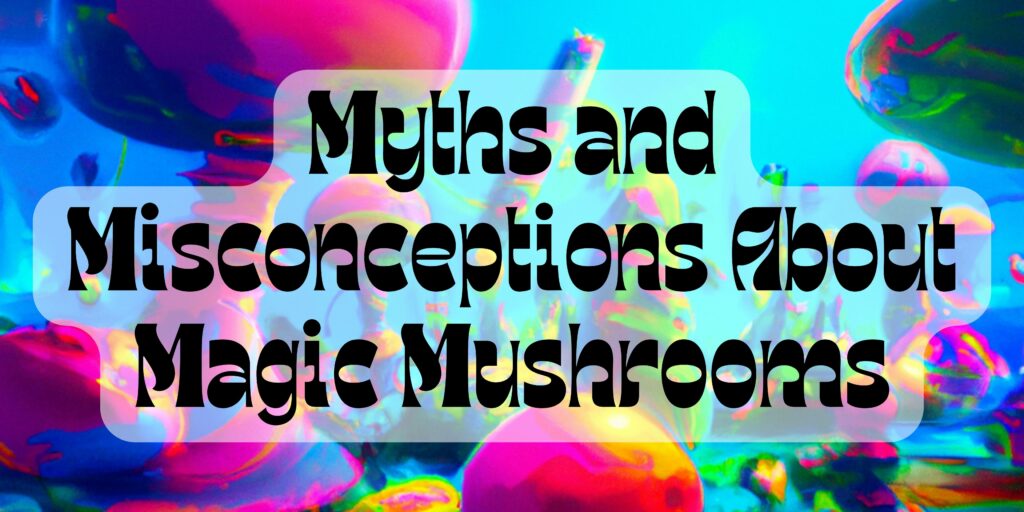Are you considering trying shrooms but concerned about potential short-term side effects? You’re not alone. While these hallucinogenic mushrooms have gained popularity for their potential therapeutic benefits, it’s important to understand the potential risks as well. In this article, we’ll explore the short-term effects of shrooms and how to mitigate them for a safe and enjoyable experience.
What Are Shrooms?
Shrooms, also known as magic mushrooms, are a type of fungi that contain psilocybin, a hallucinogenic compound. These mushrooms have been used for centuries in spiritual and cultural practices due to their mind-altering effects, including hallucinations and altered perception of time and space. However, it’s important to understand that shrooms can also have potentially harmful short-term side effects such as nausea, dizziness, and anxiety. If you’re considering trying shrooms, it’s crucial to be well-informed about their effects and potential risks. It is always recommended to consult with a healthcare professional before experimenting with any psychoactive substances. Stay safe and make informed choices.
What Are the Short-Term Effects of Shrooms?
When consumed, shrooms can produce a wide range of short-term effects on the mind and body. These effects can vary depending on factors such as dosage, individual tolerance, and environment. In this section, we will explore the different short-term effects of shrooms. We will discuss how they can alter sensory perception, mood, and emotions, as well as affect physical and psychological states. By understanding these short-term effects, we can better prepare for and manage the potential experiences that may arise from consuming shrooms.
1. Changes in Sensory Perception
When consuming shrooms, changes in sensory perception are common. Here are some steps to understand and manage these changes:
- Prepare your environment by creating a safe and comfortable space.
- Start with a low dosage to minimize overwhelming sensory effects.
- Be aware that shrooms can intensify sensory experiences, such as colors appearing more vibrant or sounds becoming more pronounced.
- Embrace the altered sensory perception and explore it with curiosity.
- Have a trusted trip sitter to help guide you through any challenging moments.
Pro-tip: Engage in sensory activities like listening to calming music or observing nature to enhance your experience.
2. Alterations in Mood and Emotions
When consuming shrooms, individuals may commonly experience changes in mood and emotions. These changes can vary from feelings of euphoria and heightened empathy to feelings of anxiety and paranoia. The specific effects can be influenced by factors such as dosage, individual tolerance, setting, and mental state. It is important to keep in mind that shroom effects can be unpredictable and may differ from person to person. While some individuals may have positive emotional experiences, others may have negative reactions. It is crucial for anyone considering shroom consumption to understand these potential alterations in mood and emotions.
Time and space may feel like they’re playing a game of hide and seek after taking shrooms – just make sure you don’t lose your mind in the process.
3. Changes in Perception of Time and Space
When consuming shrooms, individuals may experience significant changes in their perception of time and space. These alterations can be disorienting and induce feelings of time dilation or distortion.
- Time perception: Shrooms can create a sense of elongated or compressed time, where minutes may feel like hours or vice versa.
- Space perception: Users may have a distorted sense of space, perceiving objects as larger, smaller, closer, or further away than their actual size.
- Reality distortion: Shrooms have the ability to detach one from reality, blurring the boundaries between the self and the external world.
- Altered consciousness: The changes in time and space perception contribute to an overall altered state of consciousness, providing users with a unique perspective on reality.
Get ready for some trippy physical side effects – from dilated pupils to increased heart rate, shrooms will have you feeling like you’re on a wild rollercoaster ride.
4. Physical Effects
- Increased heart rate and blood pressure
- Dilated pupils
- Changes in coordination and balance
- Nausea and vomiting
- Muscle weakness or tension
Be careful, shrooms may make you question reality and your sanity – but hey, at least you’ll have a good story to tell!
5. Psychological Effects
The psychological effects of consuming shrooms can vary from person to person, but here are some common experiences:
- Changes in perception, such as vibrant colors or distorted shapes
- Altered mood and emotions, ranging from euphoria to anxiety or confusion
- Shifts in the perception of time and space, with minutes feeling like hours
- Physical effects like increased heart rate, sweating, and tremors
- Psychological effects like introspection, deep thinking, and spiritual experiences
It’s important to note that these effects may not be entirely predictable and can be influenced by factors such as dosage, individual tolerance, setting, and mental state. If you decide to consume shrooms, it’s essential to be in a safe and supportive environment, surrounded by trusted individuals. Always start with a low dose and research potential risks and interactions with other substances beforehand.
What Are the Risks and Dangers of Using Shrooms?
While many people may view shrooms as a harmless recreational drug, there are actually several risks and dangers associated with their use. In this section, we will discuss the potential negative effects of shrooms, including accidental poisoning and negative psychological reactions. We will also explore the connection between shroom use and risky behavior, as well as the potential interactions with other substances that can lead to dangerous consequences. It is important to understand the potential dangers of shrooms before considering their use.
1. Accidental Poisoning
Accidental poisoning is a potential risk associated with the use of shrooms. To minimize the chances of accidental poisoning, it is important to take the following precautions:
- Be knowledgeable: Educate yourself about different types of mushrooms and their potential toxicity.
- Purchase from reliable sources: Only obtain mushrooms from trusted suppliers or cultivate them yourself with proper guidance.
- Proper identification: Learn how to accurately identify edible mushrooms and avoid picking or consuming unknown or poisonous varieties.
- Safe storage: Store mushrooms properly to prevent accidental ingestion by others, especially children or pets.
- Begin with small doses: Start with a low dose to gauge your reaction and tolerance before gradually increasing the amount consumed.
Just remember, if you’re not ready to face your inner demons, shrooms will bring them out to play.
2. Negative Psychological Reactions
Negative psychological reactions can occur after using shrooms, which are hallucinogenic mushrooms. These reactions can vary in intensity and duration depending on individual factors and dosage. Some common negative psychological reactions include:
- Bad Trips: Users may experience intense fear, anxiety, paranoia, or panic during a shroom trip.
- Flashbacks: Some individuals may have recurring disturbing thoughts or visual disturbances even after the effects of shrooms have worn off.
- Emotional Instability: Shrooms can amplify existing emotions, leading to mood swings, emotional volatility, or even emotional breakdowns.
- Psychosis: In rare cases, shroom use can trigger temporary psychosis, characterized by delusions, hallucinations, and disorganized thinking.
It is important to note that these negative psychological reactions can be minimized by using shrooms in a safe and controlled environment, with proper preparation and supervision.
In the 1960s, shrooms gained popularity as a recreational drug, leading to increased reports of negative psychological reactions. However, recent studies have shown potential therapeutic benefits of psilocybin, the active ingredient in shrooms, in treating conditions like depression and anxiety when used under medical supervision. Ongoing research aims to better understand and harness the potential of these substances for mental health treatment.
With shrooms, the risks don’t just come from the fungi itself, but also from the unpredictable behavior it may inspire – so maybe stay away from sharp objects and heights.
3. Risky Behavior
Engaging in risky behavior while under the influence of shrooms can have negative consequences. To minimize risks, follow these steps:
- Avoid driving or operating heavy machinery while under the influence.
- Stay in a safe and familiar environment, preferably with a sober and trusted individual.
- Avoid mixing shrooms with other substances, as interactions can be unpredictable and dangerous.
- Be aware of your surroundings and avoid potentially hazardous situations.
Remember, always prioritize your safety and well-being when using shrooms. It’s important to make informed decisions and take precautions to minimize potential harm.
4. Interactions with Other Substances
Interactions with other substances are an important factor to consider when consuming shrooms. Mixing shrooms with certain substances can have harmful effects on both the body and mind. It is crucial to avoid combining shrooms with alcohol, as it can amplify the effects and heighten the potential for negative psychological reactions. Furthermore, shrooms should not be taken with other hallucinogens or medications that impact serotonin levels, as this can result in serotonin syndrome, a potentially dangerous condition. It is always recommended to consult with a healthcare professional before mixing shrooms with any other substances to ensure your safety.
Like a bad trip to Ikea, shroom effects can last longer than expected – plan accordingly.
How Long Do the Effects of Shrooms Last?
The effects of shrooms, also known as psilocybin mushrooms, can vary in intensity and duration depending on several factors. In this section, we will discuss the timeline of shroom effects, starting from the onset of their effects and leading up to their peak. We will also examine how long these effects typically last, providing insight into the overall duration of a shroom trip. Keep in mind that individual experiences may vary, and it is always important to approach shroom usage with caution and responsibility.
1. Onset of Effects
The onset of effects after consuming shrooms can vary depending on several factors. Here are the steps to understand the onset of shroom effects:
- Consumption: Effects typically start within 20-60 minutes after ingestion.
- Metabolism: Psilocybin in shrooms is converted to psilocin, which interacts with serotonin receptors in the brain.
- Activation: Once psilocin binds to serotonin receptors, it triggers a cascade of effects, leading to altered sensory perception and mood changes.
Understanding the onset of shroom effects can help individuals anticipate and manage their psychedelic experiences.
2. Peak Effects
During the peak effects of a psilocybin trip, users can expect the most intense and profound experiences. Here are the steps that typically occur during this peak period:
- Intense visuals: Users may experience vivid hallucinations, including distortions of shapes, colors, and patterns.
- Heightened emotions: Emotions can become amplified, leading to intense feelings of joy, awe, or even anxiety and fear.
- Altered sense of self: Users may have a sense of ego dissolution, feeling connected to everything around them.
- Profound insights: Many people report gaining deep insights and a new perspective on life during the peak effects.
- Time distortion: Time may feel elongated or compressed, with moments of timelessness and a distorted sense of past, present, and future.
In 1943, chemist Albert Hofmann accidentally ingested a small amount of LSD, experiencing the first documented acid trip and discovering the powerful effects of psychedelics. This accidental discovery paved the way for further research into the therapeutic potential of psychedelics.
3. Duration of Effects
The duration of shroom effects can vary depending on several factors. Here are the steps to determine the duration of effects:
- Onset of Effects: Shrooms typically take effect within 20-60 minutes after ingestion.
- Peak Effects: The peak effects of shrooms occur around 2-3 hours after consumption and can last for several hours.
- The total duration of shroom effects can range from 4-8 hours.
It is important to note that individual experiences may vary, and factors such as dosage, individual tolerance, setting and environment, and mental state can influence the duration and intensity of the effects.
What Are the Factors That Can Influence the Duration and Intensity of Shroom Effects?
The effects of consuming shrooms can vary greatly from person to person, and even from one trip to another. Understanding the factors that can impact the duration and intensity of shroom effects is crucial for a safe and enjoyable experience. In this section, we will explore four key factors that can influence the effects of shrooms: dosage, individual tolerance, setting and environment, and mental state and expectations. By gaining insight into these factors, you can better prepare for your shroom journey and potentially enhance your experience.
1. Dosage
When consuming shrooms, it’s crucial to consider the appropriate dosage to ensure a safe and enjoyable experience.
- Start with a low dose of around 1-2 grams for beginners.
- Gradually increase the dosage in increments of 0.5-1 gram to find your ideal level.
- Be aware that the potency of different mushroom strains may vary, so it’s important to adjust your dosage accordingly.
- Always wait at least 2 hours before deciding to take more, as the effects of shrooms can take time to fully manifest.
- Remember that individual tolerance and sensitivity to psilocybin can vary, so it’s best to start with a low dose and increase slowly.
It’s important to approach shrooms with caution and respect their power. Remember to research and educate yourself about the specific strain, effects, and potential risks before consuming.
2. Individual Tolerance
Individual tolerance is a key factor in the effects of shrooms. There are several factors that can impact an individual’s tolerance, including:
- Previous experience: Individuals who have previously been exposed to psychedelics may have developed a higher tolerance.
- Physiology: Variations in metabolism and body composition can affect the intensity and speed of the effects.
- Mental state: One’s mindset and emotional state before consuming shrooms can greatly influence the experience.
- Medications: Certain medications, like SSRIs, can interact with shrooms and affect tolerance levels.
- Environmental factors: The setting and atmosphere in which shrooms are consumed can also play a role in determining tolerance levels.
Be careful where you shroom, as the setting and environment can make or break your trip – and possibly your landlord’s furniture.
3. Setting and Environment
The setting and environment in which you consume shrooms can greatly impact your experience and overall trip. Here are some important considerations:
- Choose a calm and comfortable setting, preferably in a familiar and safe environment.
- Minimize external distractions, such as loud noises or bright lights.
- Surround yourself with trusted and supportive individuals who can help guide you through the experience.
- Consider the physical surroundings, such as nature or a cozy indoor space, to enhance the mood and atmosphere.
In 1960, a group of researchers in Prague conducted a groundbreaking study on the effects of psilocybin mushrooms. They found that the setting and environment had a significant influence on the participants’ experiences, with those in a comfortable and serene setting reporting more positive and insightful trips.
4. Mental State and Expectations
Mental state and expectations play a crucial role in the effects of shrooms. To ensure a positive experience, follow these steps:
- Set and Setting: Choose a comfortable and safe environment, free from distractions.
- Mindset: Approach the experience with a positive and open mindset, embracing the potential for personal growth.
- Intentions: Set clear intentions for the journey, such as self-reflection, creativity, or spiritual exploration.
- Preparation: Research and educate yourself about the effects, risks, and proper dosage of shrooms.
- Support: Have a trusted and sober friend present to provide support and guidance if needed.
Pro-tip: Remember that every individual’s experience with shrooms is unique, so it’s important to honor your own mental state and expectations throughout the journey.
Frequently Asked Questions
What are some common short term side effects of shrooms?
Some common short term side effects of shrooms include nausea, vomiting, increased heart rate, dilated pupils, and changes in perception and mood.
Can shrooms cause hallucinations?
Yes, shrooms contain a psychoactive compound called psilocybin which can cause hallucinations and altered perception.
Are there any physical side effects of shrooms?
In addition to the common short term side effects, shrooms may also cause physical effects such as muscle weakness, coordination difficulties, and changes in blood pressure and body temperature.
How long do shroom side effects typically last?
The duration of shroom side effects can vary depending on factors such as dosage and individual tolerance, but typically they last for 4-6 hours.
Can shrooms cause short term memory loss?
Yes, shrooms can impair short term memory and create difficulties in remembering recent events.
Are there any potential long term side effects of shrooms?
There is limited research on the long term effects of shrooms, but some potential side effects could include persistent changes in mood or perception, and increased risk of developing mental health disorders.




